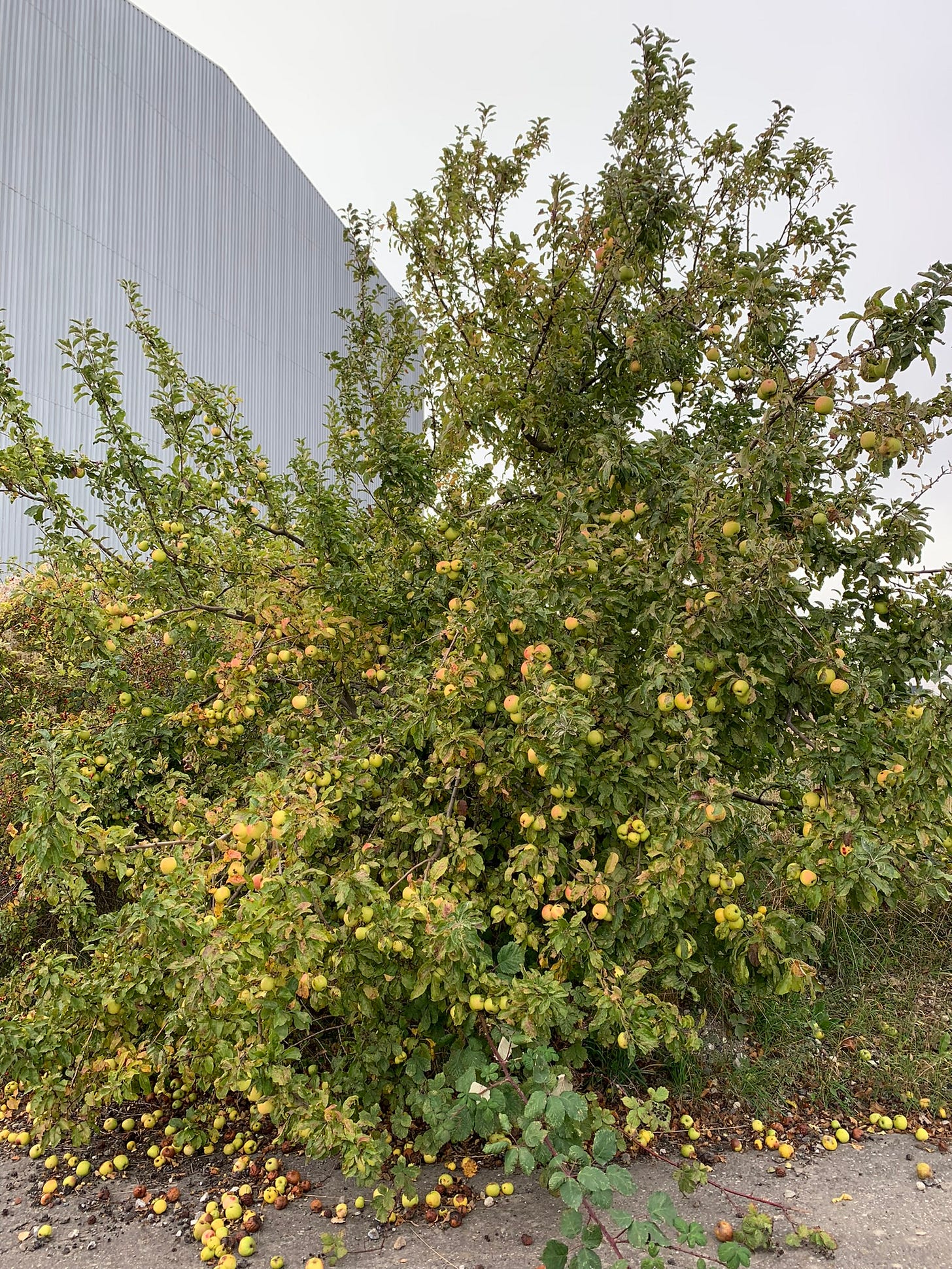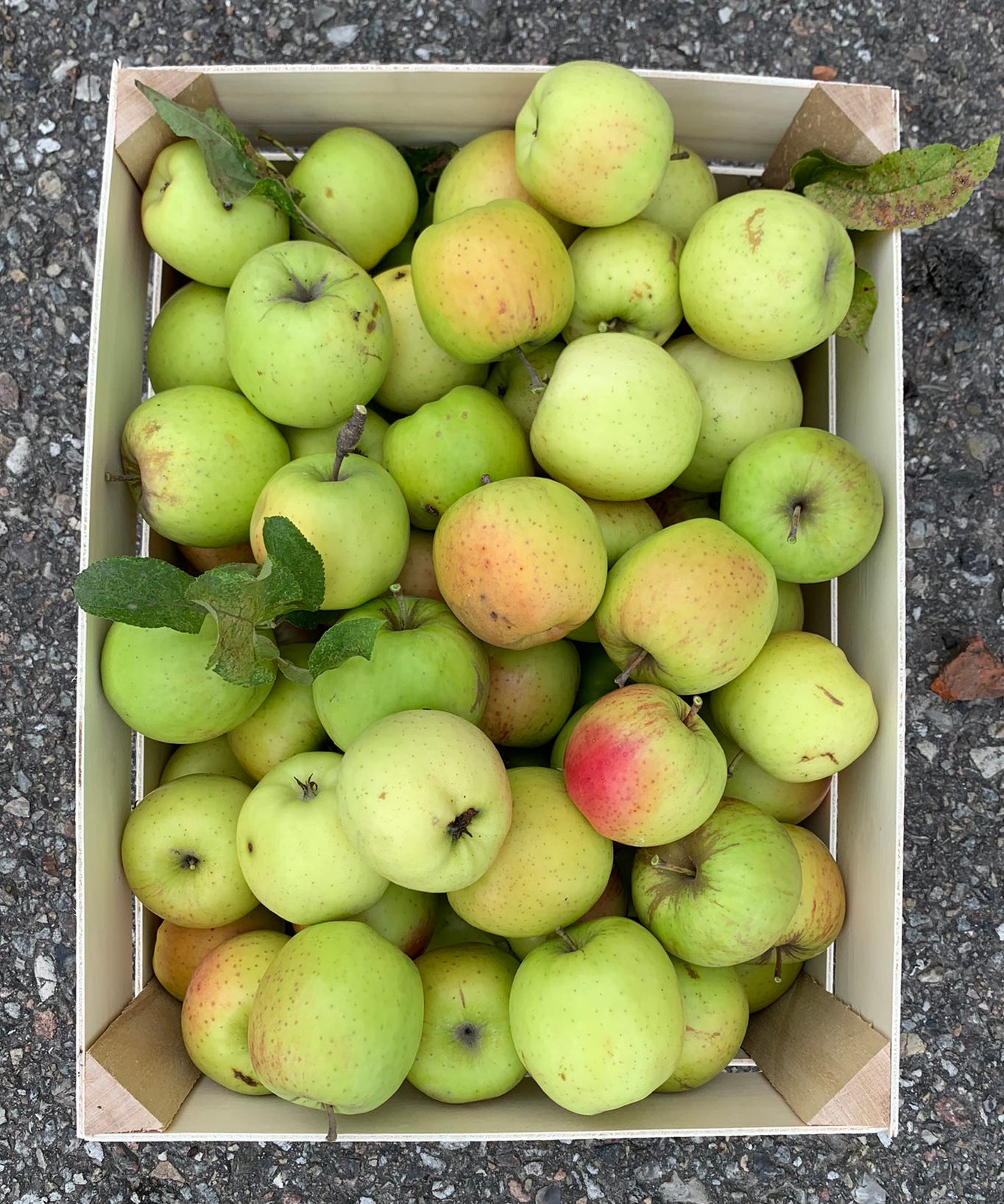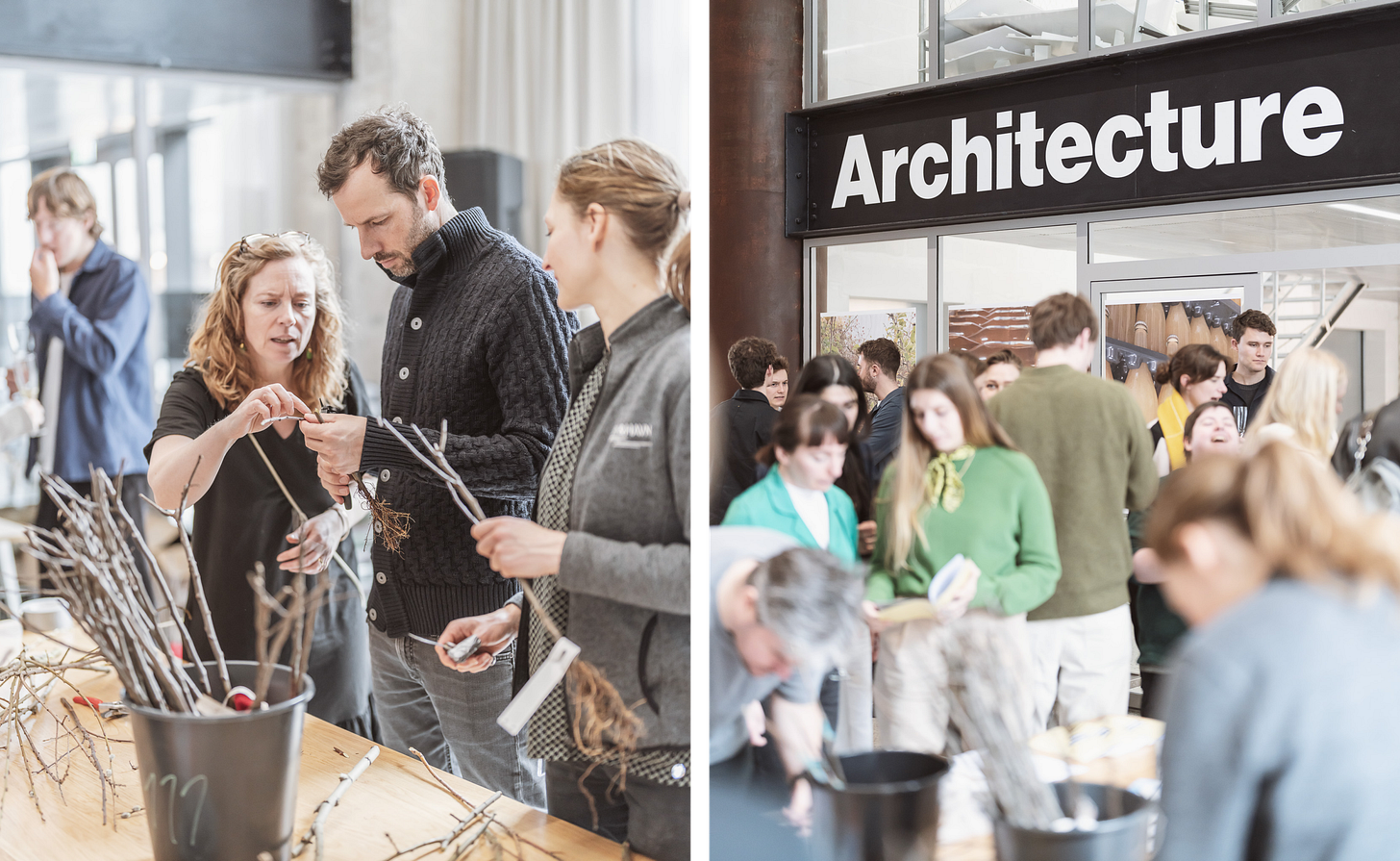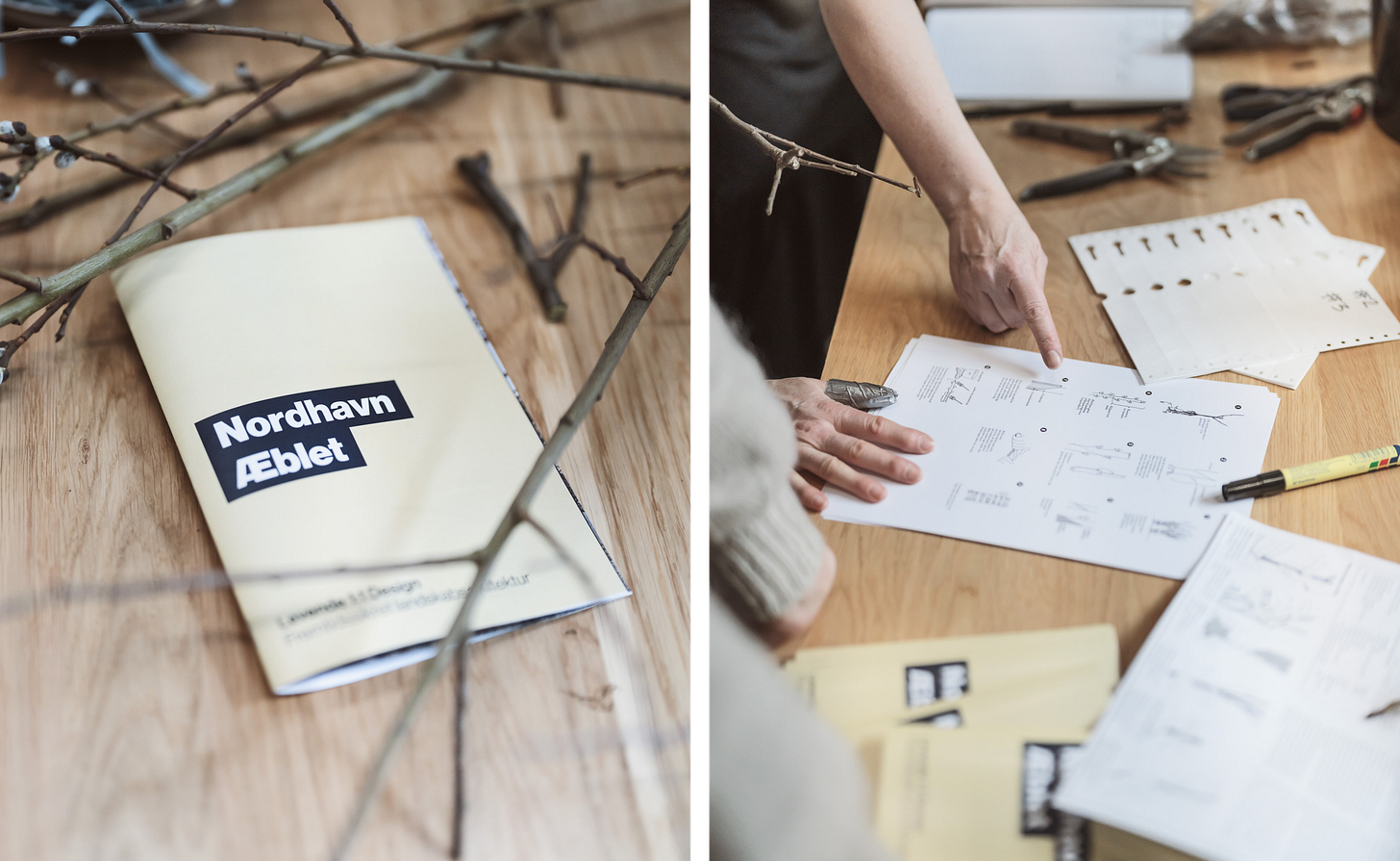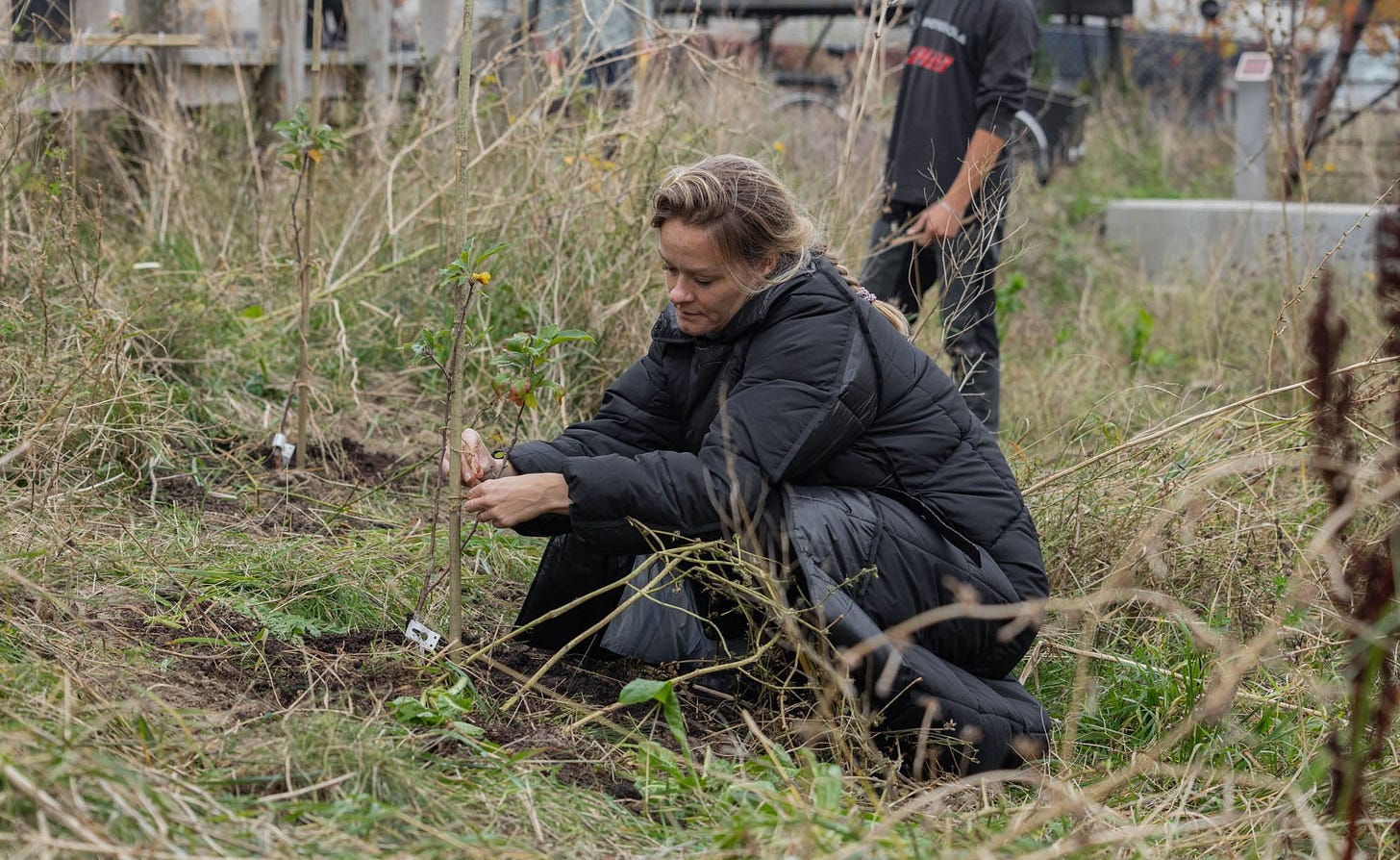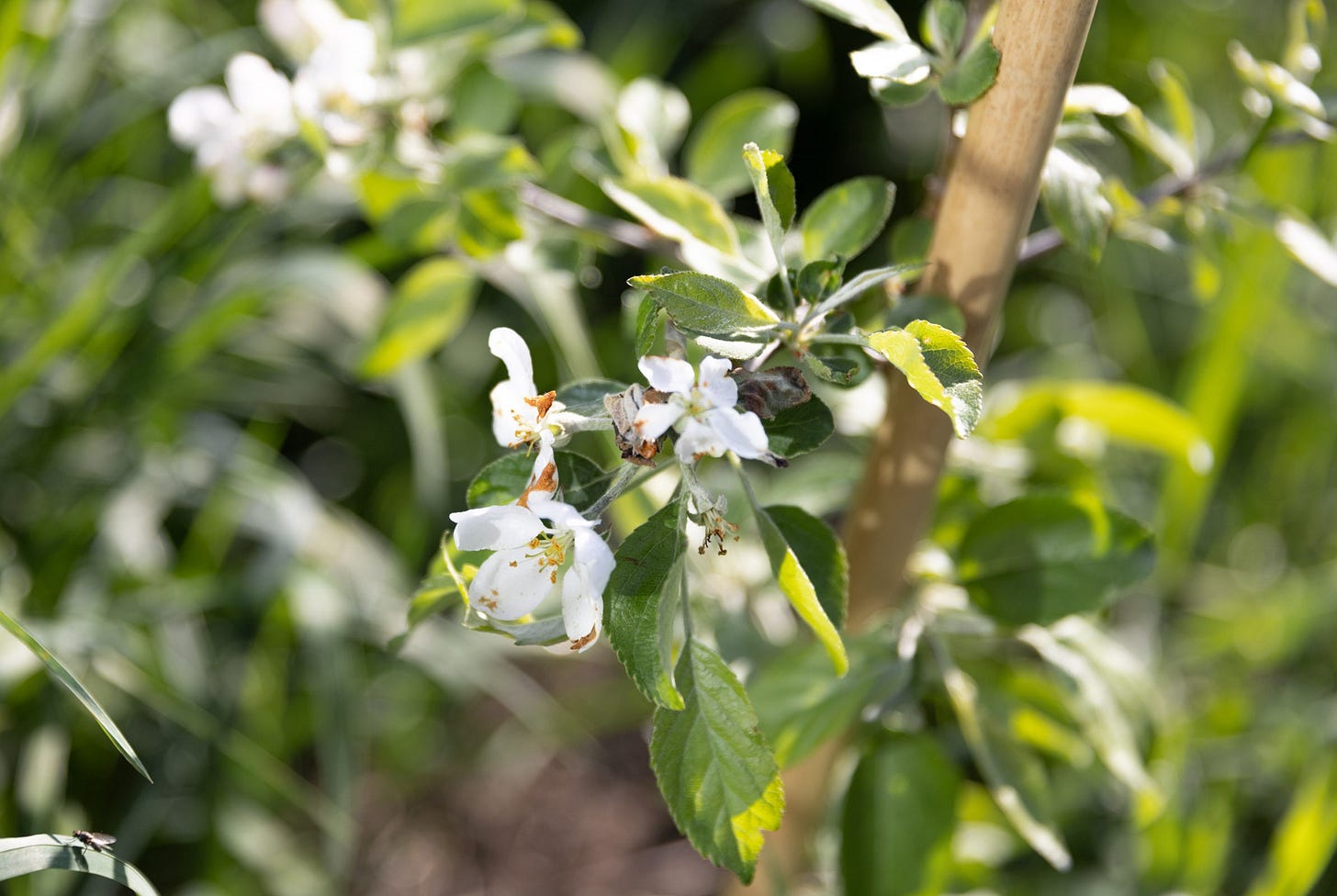Developing landscapes in a desolate urban context can yield unexpected insights from what already exists in nature. In December 2022, a landscape project at an abandoned plot in Copenhagen’s Nordhavn led to the discovery of an as-of-yet unknown type of apple tree. Since then, we’ve investigated the nature of the tree in depth, and it became a source of inspiration in the development of site-specific design and species.
The discovery of an unknown species
At the end of 2022, we discovered an apple tree wildly growing in an abandoned lot in Copenhagen’s Nordhavn. Even though it was mid-December, yellow apples that almost seemed to glow were hanging from the tree. The apples were crisp and tasted sweet. The tree captured our interest, and we collected its fruit for further investigation.
After conducting extensive research on the apples from this tree, its origin remained a mystery. The location of the tree and shape of its stem indicated that it had not been placed and planted by the human hand. Perhaps it was a self-sown apple? Did it sprout from a seed in a discarded apple core? The uncertainty made us curious, and we followed the tree for the coming seasons.
Emerging ideas from a unique tree
When spring came again, the tree blossomed, and in the fall many more apples grew on the tree. Seeing and tasting the apples from the unique tree sparked the idea that the tree could spread and become a local species of apple, unique for Nordhavn.
You see, each spring when the sun hits the flowers of an apple tree, they spread their pollen from one tree to another. As a result, the DNA of the seeds always has a new genetic variation. In this case, we wanted to protect the specific apple tree and recreate it just as it was found. We could not use seeds to give life to a new plant with the same genetic background as the mother tree, as it would never give us the same tree. Therefore, we had to clone the tree 1:1.
We took small, young tree cuttings from the mother tree and grafted them to a rootstock from the tree in order to clone the tree, embracing an ‘as found’ approach. This propagation would allow us to make this unique, local tree spread its golden fruits in the years to come.
Propagation for the future
In the propagation process, we went back to using ancient knowledge from fruit cultivation. We performed vegetative propagation, where parts of the original plant grow as an independent plant – a well-known, centuries-old technique used to propagate varieties that were found particularly attractive.
In January 2023, we visited the tree again to cut fresh grafting twigs, called scions. From the new shoots on the branches, we cut and propagated them on different rootstock to learn which would be best suitable for growing in Nordhavn.
A festive event for knowledge sharing
The curiosity and interest in the tree spread amongst our colleagues at Cobe, and we decided to host a Friday event centered around the tree. This became a social afternoon where knowledge was shared about cultural history, cultivation and craftsmanship. People flocked to it, and it was a great eye-opener for many: that apples come from different trees, or that there is a difference between a tree and its root, or even that you can create your own apple trees and determine their size, and that apples have been propagated since the Middle Ages. 100 new trees were created that afternoon.
From one tree to many
In the fall 2024, the new grafted trees were planted by several Cobe colleagues, in a place in Nordhavn that is more suitable for the future ahead. From the beginning, this apple tree has become more than a single site-specific story - it’s a living element, adaptable to various projects and imbued with a shared origin. And today, three years later, the apple trees are growing.
The power and joy of sharing knowledge
Cobe is a community of diverse disciplines, and because we work closely together in unity, we sometimes forget that we come from different professional backgrounds, and that our experiences hold an immense potential for sharing our knowledge. From the multitude of questions we received during this process, we know that our apple trees live on- in people's minds, in new locations, and in new projects.
Urbanism, landscape, and architecture are the foundations of Cobe, and if we put more focus on creating new and living design elements that are relevant to existing nature and the changing climate, we might just be able to future-proof our projects.
Knowledge sharing stimulates curiosity. Within Cobe, it has created a heightened awareness of the changing elements of any landscape, increased the enjoyment of nature, and provided new and shared insights on developing landscapes with nature itself as a collaborator. Discovering and reusing site resources, applying an “as found” approach in planting and materials, is a major focus of the climate agenda, helping us to preserve natural qualities, and choose climate-proof solutions.
Our Nordhavn apple tree project has raised our awareness of the living things surrounding us, deepened our appreciation for site-specific resources, just as it perfectly aligns with our focus on climate- of reusing what’s already here and embracing nature-driven and future-proof solutions.
From one forgotten apple grew a hundred new trees, and a thousand new ideas.



